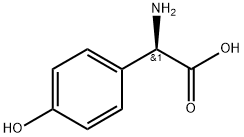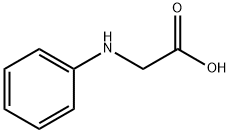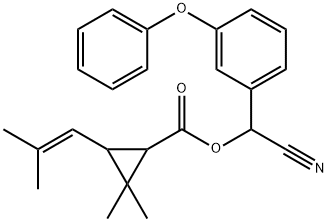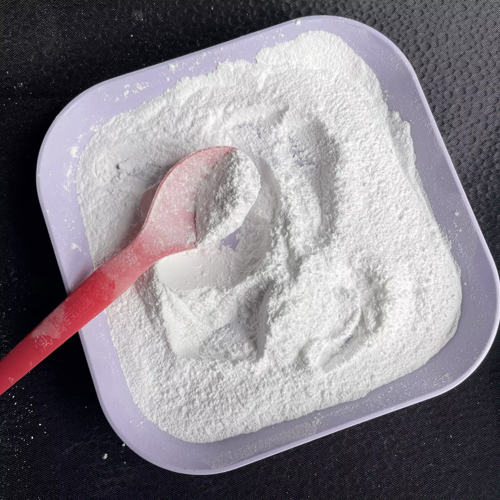L-Phenylglycine
Synonym(s):(S)-(+)-2-Phenylglycine;S-(+)-α-Aminophenylacetic acid;L -2-Phenylglycine
- CAS NO.:2935-35-5
- Empirical Formula: C8H9NO2
- Molecular Weight: 151.16
- MDL number: MFCD00064403
- EINECS: 220-909-8
- SAFETY DATA SHEET (SDS)
- Update Date: 2024-11-21 15:02:05

What is L-Phenylglycine?
Description
L-Phenylglycine is an amide that belongs to the group of pyridoxal phosphate analogues. It has been shown to be a response element for enzymes and natural compounds in Escherichia coli and Saccharomyces cerevisiae. It inhibits aminotransferase activity, dopamine synthesis, and microbial metabolism in these organisms. This compound also has a structural analysis that includes x-ray diffraction data, which can be used to identify its three-dimensional structure.
Chemical properties
White crystalline powder
The Uses of L-Phenylglycine
L-(+)-2-Phenylglycine is a derivative of Glycine (G615990), the smallest of all the amino acids, and is also used to treat schizophrenia, stroke, and benign prostatic hyperplasia. L-(+)-2-Phenylglycine is also used as an N-linked side chain of an SMTP (Stachybotrys microspora tripenyl phenols) congener, which was potent in enhancing plasminogen activation in S. microspora.
Definition
ChEBI: The S stereoisomer of alpha-phenylglycine.
Purification Methods
Crystallise it from EtOH. [Kaneko J Chem Soc Jpn 60 538 1939, Rudman et al. J Am Chem Soc 74 551 1952, Greenstein & Winitz The Chemistry of the Amino Acids J. Wiley, Vol 3 pp 2694-2697 1961, Beilstein 14 III 1187, 14 IV 1317.]
Properties of L-Phenylglycine
| Melting point: | >300 °C(lit.) |
| alpha | 157 º (c=2, 2N HCl) |
| Boiling point: | 273.17°C (rough estimate) |
| Density | 1.2023 (rough estimate) |
| refractive index | 158 ° (C=1, 1mol/L HCl) |
| Flash point: | 150 °C |
| storage temp. | Keep in dark place,Inert atmosphere,Room temperature |
| solubility | Aqueous Acid, Aqueous Base |
| pka | 1.83(at 25℃) |
| form | Fine Crystalline Powder |
| color | White |
| optical activity | [α]20/D +155°, c = 1 in 1 M HCl |
| Merck | 14,7291 |
| BRN | 2208675 |
| CAS DataBase Reference | 2935-35-5(CAS DataBase Reference) |
| EPA Substance Registry System | L-Phenylglycine (2935-35-5) |
Safety information for L-Phenylglycine
| Signal word | Warning |
| Pictogram(s) |
 Exclamation Mark Irritant GHS07 |
| GHS Hazard Statements |
H315:Skin corrosion/irritation H319:Serious eye damage/eye irritation H335:Specific target organ toxicity, single exposure;Respiratory tract irritation |
| Precautionary Statement Codes |
P260:Do not breathe dust/fume/gas/mist/vapours/spray. P271:Use only outdoors or in a well-ventilated area. P280:Wear protective gloves/protective clothing/eye protection/face protection. |
Computed Descriptors for L-Phenylglycine
| InChIKey | ZGUNAGUHMKGQNY-ZETCQYMHSA-N |
Abamectin manufacturer
JSK Chemicals
New Products
4-Aminotetrahydropyran-4-carbonitrile Hydrochloride (R)-3-Aminobutanenitrile Hydrochloride 4-AMINO-TETRAHYDRO-PYRAN-4-CARBOXYLIC ACID HCL 4-(Dimethylamino)tetrahydro-2H-pyran-4-carbonitrile 3-((Dimethylamino)methyl)-5-methylhexan-2-one oxalate 1,4-Dioxa-8-azaspiro[4.5]decane 5-Bromo-2-nitropyridine Nimesulide BP Aceclofenac IP/BP/EP Diclofenac Sodium IP/BP/EP/USP Mefenamic Acid IP/BP/EP/USP Ornidazole IP Diclofenac Potassium SODIUM AAS SOLUTION ZINC AAS SOLUTION BUFFER SOLUTION PH 10.0(BORATE) GOOCH CRUCIBLE SINTERED AQUANIL 5 BERYLLIUM AAS SOLUTION 2-Bromo-1-(bromomethyl)-3-chloro-5-nitrobenzene 2-Bromo-3-nitroaniline N-(3-Hydroxypropyl)-N-methylacetamide 3-Bromo-6-chloropyridazine 4-ethyl-3-nitrobenzoic acidRelated products of tetrahydrofuran








You may like
-
 L-2-Phenylglycine CAS 2935-35-5View Details
L-2-Phenylglycine CAS 2935-35-5View Details
2935-35-5 -
 L-(+)-alpha-Phenylglycine CAS 2935-35-5View Details
L-(+)-alpha-Phenylglycine CAS 2935-35-5View Details
2935-35-5 -
 L(+)-alpha-Phenylglycine 98% (HPLC) CAS 2935-35-5View Details
L(+)-alpha-Phenylglycine 98% (HPLC) CAS 2935-35-5View Details
2935-35-5 -
 L-Phenylglycine 97% CAS 2935-35-5View Details
L-Phenylglycine 97% CAS 2935-35-5View Details
2935-35-5 -
 L-Phenylglycine, 99% CAS 2935-35-5View Details
L-Phenylglycine, 99% CAS 2935-35-5View Details
2935-35-5 -
 L−(+)-α-Phenylglycine CAS 2935-35-5View Details
L−(+)-α-Phenylglycine CAS 2935-35-5View Details
2935-35-5 -
 2935-35-5 L-(+)-alpha-Phenylglycine, 98% 99%View Details
2935-35-5 L-(+)-alpha-Phenylglycine, 98% 99%View Details
2935-35-5 -
 Lithium ClavulanateView Details
Lithium ClavulanateView Details
61177-44-4